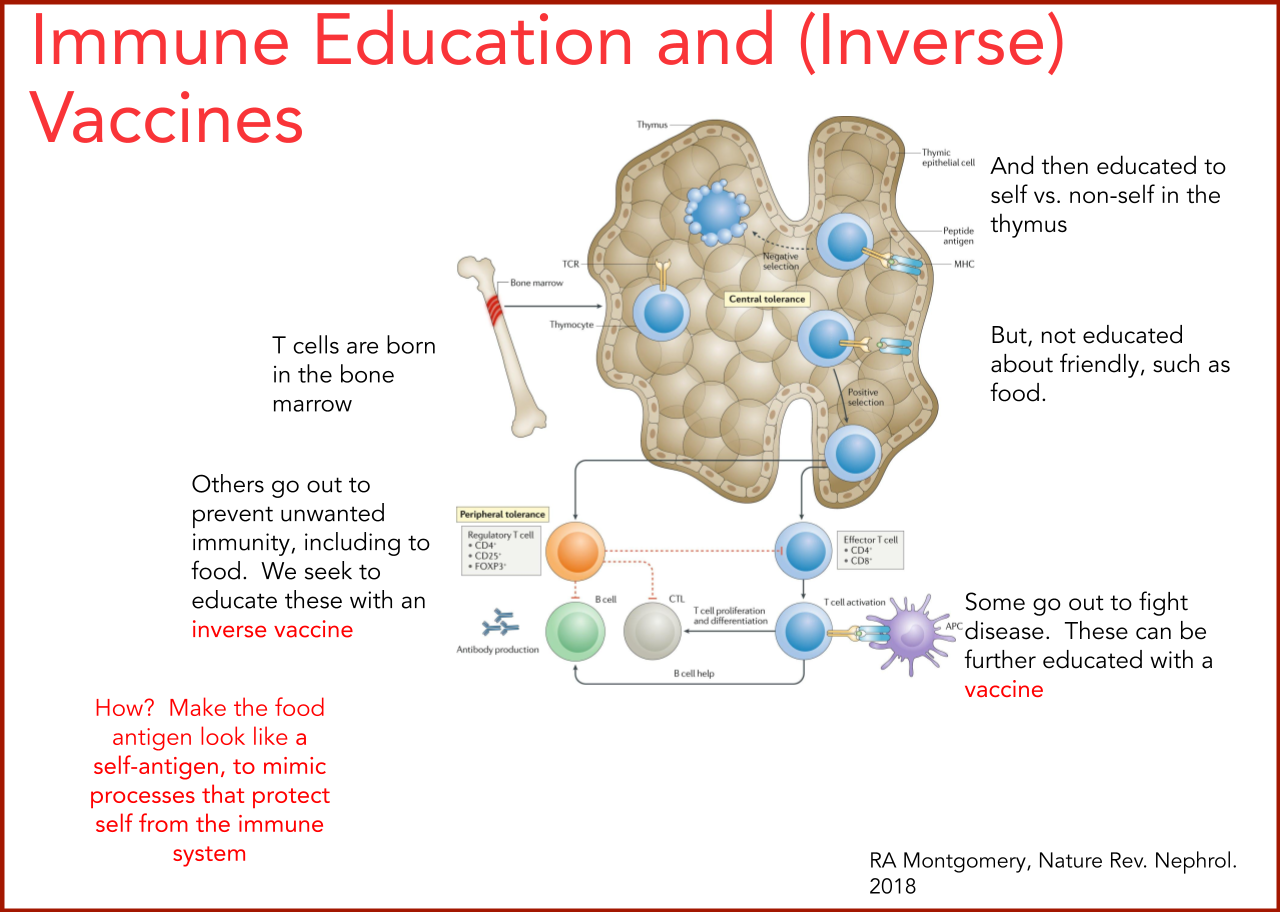Funded by the Food Allergy Fund
Dr. Jeffrey A. Hubbell, Pritzker School of Molecular Engineering, University of Chicago and Dr. Cathryn R. Nagler, Biological Sciences Division, Pritzker School of Molecular Engineering, University of Chicago, as Co-Principal Investigators
We think of a vaccine as an injection containing a measured dose of a substance that will tell our immune systems to accept an “invader” -- be it viral, bacterial or in the case of food allergies, food proteins. But what if that equation was flipped for food allergies? Researchers know that something called “food antigens” create tolerance for specific food proteins. Now researchers want to create an inverse vaccine that puts those particular food antigens to work inside of food allergic individuals so they can tolerate their allergens.
The 2020 Food Allergy Fund grant recipients Dr. Kathryn Nagler and Dr. Jeffrey Hubbell will innovate on the established technology of vaccination to induce immune responses by developing a technology for an “inverse vaccination” approach -- a method to target synthetically glycosylated food antigens. These antigens will be targeted to uptake receptors on antigen-presenting cells through a uniquely engineered glyco-vector. The goal is for the administration of the glycosylated food antigens to specifically induce both non-responsiveness and regulatory tolerance. And as such, food allergic patients could utilize an inverse vaccine to prevent and treat food allergy.
The next phase of this Inverse Vaccine study is to create recombinantly produced immunogenic peanut proteins, Ara h 1, 2 and 6, and to conjugate each of them to the established glycopolymers. The team will investigate mechanisms of protection by analyzing the tolerogenic T and B cell responses (including antibody production) in milk and peanut food allergy models, as well as by measuring changes in the microbial phenotypes. Finally, sublingual administration for inducing sustained non-responsiveness to food allergens will be studied comparatively.
Scroll Down to Click Through Slides




